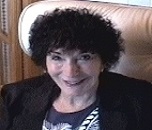Day 1 :
Keynote Forum
Donatien Mavoungou
Scientific Director, CRPH, University of Health Sciences-Libreville, Africa
Keynote: ImmunorexTM at the Final Stage of Development for Commercialization as a Model of Academic CRO / Industrial Collaboration
Time : 11:00-11:40

Biography:
Donatien Mavoungou is the Director of the Research Center on Hormonal Pathologies (CRPH) Gabon, Invited Member at McGill University Aids Center (Montreal) andrnat Genomic Chair of Canada. He authored more than 150 publications. He discovered IMMUNOREXTM DM28 inhibiting HIV-1 replication. He is Professor of Biochemistryrnand Endocrinology at the University Of Health Science Libreville, Gabon. Field: HIV, Metabolic disorders, HAART, Hormonal Therapy. He received the Prize of the National Center for Scientific Research in 2009 and 2012. (Gabon). Blue Ribbon Presenter, recipient of the Glaxo Smith Klein Award at ISHIB, Orlando (USA, 2007). Member ofrnWABT Academy.
Abstract:
ImmunorexTM has a history of 40 years of studies on Monoamine oxidase (MOA) and DHEA in Cardiovascular diseases (High Blood Pressure) and in infection including HVI-1 known today to increase cardiovascular and cerebrovascular diseases via oxidative stress leading to inflammation and neuro-virulence. ImmunorexTM is an immune-regulator with the capacity to block HIV-1 replication, to restore Th1 and Th2 equilibrium improving antibodies against HIV-Tat. It can also treat and prevent co-infections such as Tuberculosis, Malaria, Hepatitis B and C. The drug is an inhibitor of NADPH, the co-factor of G6PD resulting in the restoration of endothelial function producing Nitric oxide (NO) able to suppress neuro-inflammation and to influence Na/K Pump for blood pressure regulation. We want to present here ImmunorexTM at its final stage of development for commercialization as a model of collaboration between Academic CRO and Industry for young scientists particularly in developing countries.
Keynote Forum
Stephen D. Barr
Western University, Department of Microbiology and Immunology, Canada
Keynote: Evolution of 500 Million Year Old Antiviral Defense against HIV
Time : 11:40-12:20

Biography:
Stephen Barr completed his PhD at the age of 28 years from the University of Calgary (Canada) and postdoctoral studies from the University of Pennsylvania (USA) andrnthe University of Alberta (Canada). He is trained as a molecular virologist with an interest in understanding the human interferon response towards viruses, particularly HIVrnand Ebola. He has established expertise in host restriction factors, retrovirus integration and virus particle production.
Abstract:
HERC5 is a key player in the human interferon response towards viruses such as HIV-1, influenza A virus and human papillomavirus. HERC5 exhibits potent anti-retroviral activity, which is mediated by two independent mechanisms. The first mechanism requires its RCC1-like domain and inhibits nuclear export of incompletely-spliced HIV-1 RNA. The second mechanism requires the HECT domain and inhibits an early stage in Gag particle assembly via the modification of Gag with the ubiquitin-like molecule ISG15. To gain a better understanding of the evolution and function of HERC5, we performed phylogenetic, structural and functional analyses of the entire small HERC family, which includes HERC3, HERC4, HERC5 and HERC6. We demonstrated that the small HERC family is an evolutionarily conserved family of proteins with an ancient marine origin of >420 million years ago. Functional analyses revealed that HERC3 and HERC4 inhibit nuclear export of incompletely-spliced HIV-1 RNA similar to HERC5. In contrast, HERC6, which is the ancestor of HERC5, failed to restrict HIV-1 particle production. Much of the genetic diversity among the mammalian small HERC family lies in the RCC1-like domain; particularly the first 100 amino acids, which are evolving under strong positive selection in HERC5 and HERC6. Structural and mutational analyses identified a key amino acid determinant of anti-HIV-1 activity in HERC6. Together, our data suggests that the HERC family of HIV-1 restriction factor proteins has an ancient marine origin and has undergone gene duplication and innovation events throughout its evolution that has provided eutherian mammals with an antiviral defence against HIV-1.
- Track 1: Retroviruses Track 2: Retroviral Pathogenesis Track 3: Retroviral Diseases Track 4: Retroviral Co-infections Track 5: Endogenous Retroviruses Track 6: Retroviruses Genome Track 7: Retroviruses & Oncogenesis Track 8: Anti Retroviral Drugs

Chair
Donatien Mavoungou
University of Health Sciences-Libreville, Gabon

Co-Chair
Vladimir Zajac
Slovak Academy of Sciences, Bratislava, Slovakia
Session Introduction
Joan Smith Sonneborn
University of Wyoming, USA
Title: HIV Drug Reservoirs: Energetic and Mitochondrial Manipulators in Other Organisms and Diseases
Time : 12:30-13:00

Biography:
Smith-Sonneborn, Professor Emeritus, PhD Indiana University, postdoctoral studies at Brandeis University, and University of California Berkeley, Research Associate, University of Wisconsin, Professor University Wyoming, sabbatical training at U Southern California, Los Angeles, and Monash University, Australia. She has 68 articles in reputed journals, over 100 presentations in United States, England, Germany, Monte Carlo, Sicily, Italy, Japan, Malaysia, Canada, Mexico, and Argentina. She is presently a member of NYAS, GSA, and NSCA. She has served as Chair of the International Ciliate Conference, Gordon Conference, and reviewer for grants, journals, and Advisory Board for FDA.
Abstract:
Mimetic triggers used by sharks, bacteria, frogs, bears, and mole rats to endure extreme environmental stress offer resistance drugs for HIV. Since HIV pathology shares the inability to cope with stresses of excess ROS production, inflammation, energy depletion, insulin resistance and glucose dysfunction, all markers of cancer, Alzheimers disease, neurological diseases, diabetes, wound healing, and ischemic shock, drugs that intervene in these divergent diseases are candidates for HIV intervention. Recent paradigm shifts show that both glucose and mitochondria are central dictators of cell survival, revealing new target priorities and drugs, already in use, with promise for HIV drug therapy. Specifically, studies by others show that the anti-diabetic drug, liraglutide, maintains glucose homeostasis, shows anti-apoptotic, anti-inflammatory, anti-oxidant and neuroprotective effects against diabetes, stroke and Alzheimer disease (AD) with anti-HIV potential. Since mitochondria regulate innate and adaptive immunity, mitochondrial damage is catastrophic for HIV resistance. The drug SS-31 (Bendavia) shows mitochondrial membrane protection, as well as mitochondrial targeted antioxidants MitQ, and MCAT, show multiple disease benefits and HIV drug potential. Targeted TERT therapy, overexpression in cancer, and HIV infected cells, suggests using TERT inhibition by cancer drugs for infected cells, and TERT enhancement by drugs used in neurological diseases for by stander cells. Whole body HIV resistance agents include Nrf2, neuregulin, temperature shock stabilizers, acetyl-carnitine, and lipoic acid. Mitochondrial toxicity agents, viral Vpr, IL-1β, caspase 1, envelope protein, can be retarded by siRNA, miRNA, or the monoclonal antibody used in cryopyrin-syndromes against IL-1β). Anti-inflammatory hepatitis drug, Glycyrrhizate (licorice), represents an HIV candidate drug.
Vladimir Zajac
Cancer Research Institute, Slovak Academy of Sciences, Bratislava, Slovakia
Title: Is a dogme that HIV was transmitted to humans from apes in Africa over the last 35-50 years ago true?
Time : 14:00-14:30

Biography:
Vladimir Zajac has completed his PhD. in 1982 at the Cancer Research Institute of Slovak Academy of Sciences in Bratislava (Slovakia), where he worked as the Head of Department of Cancer Genetics from 1996 to 2010. He joined the Medical Faculty of the Comenius University as Associate Professor of Genetics in 2007. He has published 67 papers mostly in reputed journals and he is editor of the book "Bacteria, viruses and parasites in AIDS process“ (InTech, 2011).
Abstract:
AIDS currently represents one of the most serious healthy and social problems. It is therefore necessary to find new therapeutic targets. There is increasing evidence, pointing out that the main place of HIV infection and CD4+T cells loss is in the GIT and other mucosal tissue, and not in the blood. These findings go along with new studies about the role of bacterial translocation in the gut as central driver of AIDS pathogenesis. We have identified HIV-like sequences and HIV-like proteins in bacteria and yeast in a cohort of 80 HIV positive patients from Slovakia, USA, Kenya and Cambodia. DNA testing of bacteria and yeasts: a) from intestinal tract of American and Slovak HIV-positive patients; b) from respiratory tract of Cambodian and Kenyan HIV-positive children has detected sequences 90% homologous with the corresponding sequences of HIV-1. HIVlike proteins using monoclonal antibodies (MAB) against HIV-1 antigens p17, p24, gp41 and p55 were identified in bacterial extracts of all patient’s cohorts. HIV-like protein of size 95 kDa was detected by MAB against gp120 only in Candida species of Cambodian and Kenyan samples. Specific properties of patient’s microbes were detected by infection of HL-60 cells and also the reducing the viral load in AIDS patients after administration of probiotics E. coli Nissle 1917. Based on these results may be hypothetically explained that bacteria and yeasts serve as a natural host of HIV sequences since the beginning of mankind. Thanks to countless epidemics individuals carrying the pathogenic microbes with HIV sequences, largely extinct. However, administration of antibiotics, drugs and anal intercourse was induced intestinal dysbiosis and pathogenic bacteria are re-propagated. Pathogenic microbes bearing HIV sequences moved to the majority, penetrate from the intestinal tract into the blood, invade the lymphocyte, infected/lyse them and the process of immunodeficiency may start. Presented hypothesis answer to many until now unanswered questions: origin of HIV, large scale HIV positivity in Africa, connection of AIDS with TBC in Africa, absence of "gold standard" in Africa, the presence of HIV reservoirs after antiretroviral therapy, atypical course of disease in comparision with other retroviral infections, the rarity of complete viral particles detection in the material from AIDS patients, but detection of HIV sequences and the HIV-like proteins herein. According to our results there is a strong objection again dogma that HIV was transmitted to humans from apes in Africa about 35-50 years ago on the route of accidental contacts. And that’s a good news for Africa.
Monica Roth
Rutgers University, USA
Title: Tethering and integration of Murine leukemia virus integration: Structural studies of IN for viral and target recognition
Time : 14:30-15:00

Biography:
Monica Roth, PhD is the Merck Research Laboratory Professor in Clinical Pharmacology at Robert Wood Johnson Medical School, Rutgers University, Piscataway NJ USA.
Abstract:
Retroviral integration involves the recognition of the viral LTR sequences with the host DNA. Target-site selection has profound effects on viral pathogenesis and involves interaction with host proteins. Our research has focused on defining the structural elements within the MLV IN required for DNA interactions. All IN proteins have three domains, the N-terminal domain (NTD), the catalytic core domain (CCD), and the C-terminal domain (CTD). The MLV NTD contains an HHCC zinc-binding motif, which is conserved in all retroviral IN proteins and vary in their loop regions. Two crystal forms of the Moloney Murine leukemia virus (M-MLV) IN NTD have been analyzed and consist of an N-terminal extension domain (NED) before the HHCC domain, similar to prototype foamy virus (PFV) IN. The structure of the NED consists of three anti-parallel β-strands and α-helix and an extended β-sheet between HHCC β-strands and the NED. Differences between the PFV and MLV IN NEDs localize at regions identified to interact with the PFV LTR. A solution NMR structure of the M-MLV CTD and a structural homology model of the catalytic core domain (CCD) have been generated. The MLV IN CTD (PDB ID: 2M9U) adopts an SH3 domain fold followed by a long 28 residue unstructured tail. We have obtained a concordant structural model of the MLV IN CCD using SWISS-MODEL, MMM-tree and I-TASSER servers. Using the PFV IN target capture complex X-ray structure and structure-based sequence alignment, residues within the CCD α2 helical region and the CTD β1-β2 loop predicted to bind target DNA in the context of the active MLV intasome were identified. The role of these residues in vivo was analyzed by point mutations and motif interchanges. Next-generation sequencing and analysis of local integration target sites indicate the CCD α2 helical region interacts with the sequence outside the target site duplication (TSD), whereas the CTD β1-β2 loop binds to residues within TSD. On a global level, alterations to the MLV IN CTD successfully results in decreasing its integration frequency at transcription start sites (TSS) and CpG islands, thereby reducing the potential for insertional activation. The host BET proteins Brd2, 3 and 4 interact with the MLV IN protein primarily through the BET protein ET domain. We have characterized the IN CTD:Brd3 ET domain interaction using solution NMR in which a significant disorder-to-order transition of the unstructured C-terminal tail region of IN CTD occurs in the presence of the ET domain. Truncation of the C-terminal TP region of IN affects the global targeting profile of MLV vectors by decreasing the propensity to integrate near TSS and CpG islands. WT IN integration events show strong correlation within 100 bp of a known BET binding site. In the absence of the IN CTD TP region, targeting to these known BET binding sites is reduced. Recent structural studies have focused on the structure of the MLV IN CTD in complex with the Brd3 ET domain. The solution structure of the Brd3 ET domain will be presented in the presence and absence of IN sequences.
Desta Kassa
Director-HIV/AIDS and TB research Directorate, Ethiopia
Title: Discriminative expression of whole blood genes in HIV patients with latent and active TB in Ethiopia
Time : 15:00-15:30

Biography:
Abstract:
Background: Transcriptomic host biomarkers could assist to develop effective diagnostics and therapeutics for tuberculosis (TB). However, different gene biomarkers may be discriminatory in different populations depending on the host and bacilli genetics, and host immune reactivity due to HIV infection, that need to be addressed. Methods: the expression levels of 45 genes that are known to be involved in or affected by TB pathogenesis were analyzed using Reverse Transcriptase Multiplex Ligation Probe Amplification (RT-MLPA) assay in whole blood of 106 HIV positive individuals including active TB patients (TB+HIV+, n=29), and non TB patients that are tuberculin skin test positive (TST+) (TST+HIV+, n=26), or TST negative (TST-HIV+, n=51). Results: Between the two clinical groups (TB+HIV+ vs. TST-HIV+) 8 genes were differently expressed (CCL19, CD14, CD8A, FPR1, IL7R, CCL22, TNFRSF1A, and FCGR1A); between TB+HIV+ vs. TST+HIV+, 6 genes (CD14, IL7R, TIMP2, CCL22, TNFRSF1A, and FCGR1A) were differently expressed. Since no difference in gene expression was revealed between TST+HIV+ vs. TST-HIV+, we clustered both the TST+HIV+ and TST-HIV+ individuals as one group (TST+/-HIV+) and compared gene expression with TB+HIV+ patients. Thus, the results revealed that the levels of five genes (CD8A, TIMP2, CCL22, FCGR1A and TNFRSF1A) were the most accurate single gene markers for differentiation between TB+HIV+ and TST+/-HIV+, with AUCs of 0.71, 0.71, 0.79, 0.83 and 0.73, respectively. However, the combination of two genes (CCL22 +FCGR1A) and FCGR1A alone were the most accurate marker for differentiation between the two groups (TB+HIV+ and TST+/-HIV+) with AUC of 0.85 and 0.83, respectively. Conclusions: We showed that five genes (CD8A, TIMP2, CCL22, FCGR1A and TNFRSF1A), specifically FCGR1A and CCL22 have the potential to discriminate active TB from non-active TB in HIV patients in Ethiopia and could be used to improve diagnostic tools for active TB in HIV patients, and to understand the pathogenesis of TB/HIV coinfection.
Loyda M. Melendez
University of Puerto Rico Medical Sciences, USA
Title: Monocyte/macrophage cathepsin B interactome in HIV-1 neurocognitive disorders
Time : 15:30-16:00

Biography:
Dr. Loyda M. Meléndez has completed his PhD and postdoctoral studies from Emory University School of Medicine School of Medicine. She is Professor and director of the Translational Proteomics Center, at the University of Puerto Rico School of Medicine. She has published more than 50 papers in reputed journals and has been serving as an editorial board member. Her diverse preparation in Medical Technology and Experimental Pathology-Immunology provided her the tools to apply knowledge to uncovering mechanisms of pathogenesis against HIV. Her work is reflected in studies of HIV-infected macrophages and the proteins associated with neuropathogenesis.
Abstract:
Chronic human immunodeficiency virus type one (HIV-1) infection leads to a spectrum of neurological and cognitive abnormalities, known collectively as HIV-associated neurocognitive disorders (HAND). HAND remains prevalent, particularly in its milder forms, despite effective combination antiretroviral therapy (cART). The pathogenesis of HAND is thought to involve HIV-infected perivascular macrophages and microglia, whose activation leads to the release of pro-inflammatory cytokines and other soluble factors toxic to neurons. One factor that may be involved in macrophage-mediated HIV neurotoxicity is cathepsin B, a member of the cysteine protease family. We recently demonstrated that monocyte-derived macrophages (MDM) secreted, cathepsin B has increased neurotoxic activity in vitro. In studies of our Hispanic women cohort, we observed increased expression of both cathepsin B and cystatin B in monocytes of women with HAD on cART with no comorbid conditions. Cathepsin B is also upregulated in the CNS of patients with HAND. We hypothesized that cathepsin B is interacting with other proteins that contribute to neurotoxicity. Using immunoprecipitation of cathepsin B in macrophage supernatants and mass spectrometry, we demonstrate that cathepsin B interacts with MMP-9 in uninfected cells but this interaction disappears in HIV infection and develops a new interaction with serum amyloid P component (SAPC). SAPC is related to amyloid deposition in Alzheimer’s disease (AD). These results suggest that cathepsin B might be involved in amyloid-beta- related inflammatory response, which results in neuronal death. These studies will significantly advance the HIV field by providing new clinical diagnostic tools, new pathways, and possible complementary therapies against HAND.
Wilhelm Leuschner
Ultraviolet and Visible Light Laboratory (UVLL), South Africa
Title: TB spead prevention - Novel closed UVGI luminaire / fixture (including LED lighting)
Time : 16:00-16:30

Biography:
Wilhelm has completed his D Eng degree in 1986 at the University of Pretoria. He has been with the Department of Electrical, Electronic and Computer Engineering for 38 years, of which 18 years as head of the department. He started the Light and Vision Laboratory at the University of Pretoria. He is currently emeritus professor at UP and owner of the UV and Light Laboratory (ULL). He is the author of numerous published and presented papers and the holder of a number of patents.
Abstract:
According to World Health Organization (WHO) estimates, South Africa ranks the third highest in the world in terms of TB burden (0.4–0.59 million), after India (2.0–2.5 million) and China (0.9–1.2 million). HIV is fueling the TB epidemic with more than 70% of TB patients also living with HIV. UVGI technologies are commonly used to prevent the spread of airborne TB microorganisms. The main challenges facing the UVGI fixture designer include, high disinfection effectiveness and excellent eye and skin safety. For a UVGI installation the total life cycle (cost of ownership) for every specific application / installation is seldom sufficiently considered. The two main componensts are: capital expenditure and operational expenditure. Capital costs include fixture cost and installation cost; which usually includes mounting and electrical reticulation costs; as well as possible additional ventilation and UVC radiation screening costs. Operational costs include electrical power and energy costs and maintenance costs (lamp and ballast replacements, cleaning, etc.). A holistic approach to designing a UVGI system, has to focus on the fixture but also the application, simple fixture installation, limited electrical reticulation changes, energy efficiency, low maintenance and environmental aspects such as noise and air draft introduction from the fixtures. A novel closed UVGI luminaire / Fixture has been developed to address all the criteria mentioned. It is a closed unit with low noise level fans to move the air through the UVC dosing zone in the fixture. The unit includes an energy efficient LED panel light at the bottom, so that the UVGI unit can replace legacy fluorescent light fixtures, without any new or additional electrical reticulation. Simple maintenance is built into the design of the fixture. The prototype has been tested for effectiveness, safety and energy efficiency.
ORONSAYE F E
University of Benin, NIGERIA
Title: TRENDS IN HIV ASSOCIATED TB IIN BENIN CITTY NIGERIA

Biography:
.
Abstract:
OBJECTIVES; To determine the trend in sero prevalence of HIV- associated Tuberculosis(TB)in Benin City Nigeria. From 1990-1999. Patients suffering from HIV infection are prone to attack by various organisms because their highly compromised immune system. Treatment of TB has been of serious worry to Clinical Bacteriologist. Therefore to be co-infected with the dreaded HIV/AIDS compounds the health problem of such patients.Quaranteing such patients is a faster way of treatment and prevention of spread of the disease to others.The documentation of such cases becomes of public health advantage both for epidemiological and statistical details. Methods;A prospective record was kept of a who presented of symptoms suggestive of TB at the health centres. Patients confirmed to be TB infected by presence of acid and acohol fast bacilli(AAFB) by Zieh(ZN)il Zeihl Nielsen staining method, of their sputa. were screened for -HIV anti bodies Results;Theis study revealed a rising rend in HIV and TBco-infection from 0% in 19901992 to 2% in 1993/1994 and 1999 the prevalence has increased to 3.5 from 2.8% in 1998.More males than females were infected with a ration of 1.5;1. The highest prevalence was observed among individuals aged 20-49 years. Conclusion; Our presentation, highlighted the magnitude of the problem with HIV associated TB infection in this city. Within the period under review
- Track 9: Retroviral Clinical Trials Track 10: Retroviral Therapeutics Track 11: Retroviruses Current Research Track 12: Novel Therapeutic Approaches Track 13: AIDS and Epidemiology Track 14: HIV/AIDS and Africa Track 15: AIDS, STDs and STIs

Chair
Jiri Hejnar
Academy of Sciences of the Czech Republic, Czech Republic
Session Introduction
Jiřà Hejnar
Academy of Sciences of the Czech Republic, Czech Republic
Title: Genetic diversity of NHE1 and resistance/susceptibility to avian leukosis virus J in birds
Time : 10:30-11:00

Biography:
Abstract:
The J subgroup avian leukosis virus (ALV-J) infects domestic chicken, jungle fowl, and turkey and enters the host cell through a receptor encoded by tvj locus and identified as Na+/H+ exchanger 1 (NHE1). The resistance to ALV-J in a great majority of galliform species was explained by deletions or substitutions of the critical tryptophan 38 in the first extracellular loop of NHE1. Because several cases of ALV-J positivity have been reported in feral duck species recently in Asia, we studied the natural polymorphisms of NHE1 in wild ducks, geese, and other avaian species. In parallel, we examined the NHE1 polymorphism in domestic chicken breeds where we documented differences in their susceptibility to ALV-J in vitro. In a panel of chicken breeds assembled with the aim to cover the maximum variability encountered in domestic chickens, we found a completely uniform sequence of NHE1 extracellular loop 1 (ECL1) without any source of genetic variation for the selection of ALV-J-resistant poultry. In wild bird species, mostly galloanseriforms, we demonstrate polymorphic amino-acids and the prevalent absence of the critical tryptophan residue within ECL1. In several species, the W38 was detected and the susceptibility to ALV-J was confirmed by infection of primary cells in culture. Our results will be discussed as to the chance of ALV-J to be transmitted to new hosts and to establish tha natural reservoir of circulating virus with potential of further evolution.
Anna K Coussens
University of Cape Town, South Africa
Title: Vitamin D for combating HIV/TB
Time : 11:30-12:00

Biography:
Anna Coussens obtained her PhD in Australia at the Queensland University of Technology, in Cellular and Molecular biology. After completing a postdoc at the National Institute of Medical Research in the UK, she moved to the University of Cape Town in 2012, to develp a research program in clinical TB-HIV immnology. She is a Senior Lecturer in the Division of Medical Microbiology, within the Institute of Infectious Disease and Molecular Medicine. She recently began her on research group focusing on host directed therapies and biomarkers of subclincal infection. She is currenly an executive committee member of the Global Young Academy.
Abstract:
Tuberculosis (TB) susceptibility is influenced by immunosuppression during Mycobacterium tuberculosis (Mtb) infection. Amongst the greatest risk factors for TB are HIV-1 infection and vitamin D deficiency. These risks factors are not mutually exclusive and exacerbate eachother. However, the phenotype of immunodeficiency induced by each is different, therefore their interrelationship on suceptiblity is complex. Co-infection with HIV is thought to increase susceptibility to TB via a number of mechanisms; primarily through dysfunctional and decreased CD4+ T cells and impaired T cell activation. However, the impact on innate immuity which may influce the primary response to Mtb is less clear. Vitamin D deficiency not only associates with TB risk, but it is greater in HIV-co-infected patients. The effects of vitamin D on the immune system are pleiotropic, being both anti-inflamamtory and anti-microbial. Consequently, the exact mechanisms by which vitamin D may help prevent and treat TB-HIV remain contentious. Evidence suggests that vitamin D may not only reduce risk of TB by increasing anti-mycobacterial immunity and reducing inflammation, but it may also reduce HIV replication and the associated effects on innate and adaptive immunity; thus concomitantly reducing the associated risk of HIV on TB. I will summarise our in vitro and ex vivo findings in various populations on the effect of vitamin D supplemention on the response of innate and adaptive immunity to HIV-Mtb infection, and demonstrate the effects of local inflammation on the cellular response to co-infection. Vitamin D may prove to be a cheap, effective, tool for preventing TB-HIV disease progression.
Sigcinile Dlamini
University of Cape Town, South Africa
Title: The antiretrovirals, dapivirine and tenofovir disoproxil fumarate regulate immune function gene expression in cervical cells alone and in combination with medroxyprogesterone acetate
Time : 12:00-12:30

Biography:
Abstract:
The concurrent use of hormonal contraception and ARVs is likely to increase with the implementation of programs using ARVs to prevent HIV infection. However, little is known about the combinatorial effects of different ARVs and progestins used in hormonal contraception, both systemically and in the female genital tract. In this study we investigated the effects of the ARVs dapivirine (DPV) and tenofovir disproxil fumarate (TDF) alone and in combination with medroxyprogesterone acetate (MPA) on select immune function gene expression. Cervical TZM-bl cells were exposed to varying concentrations of DPV and TDF on their own, or in combination with 100 nM MPA or the glucocorticoid dexamethasone (DEX). Results show that upregulation of IL-8 mRNA in TZM-bl cells occurs at high concentrations (1, 10 uM) of TDF or DPV in a time-dependent manner. On their own, DEX or MPA also resulted in a pro-inflammatory IL-8 response, which is greatly potentiated upon co-stimulation with 1 µM DPV, while co-stimulation with 1 µM TDF resulted in an additive IL-8 pro-inflammatory response. mRNA levels of the anti-inflammatory gene, GILZ, which is transactivated by DEX or MPA alone, remained unchanged by up to 10 µM of either ARV, while the ARVs alone had no effect on GILZ mRNA levels. Only high concentrations of DPV but not TDF reduced the cell viability. Results from this study suggest that DPV or TDF have differential effects on select immune function genes and may exert cytotoxic effects directly on cervical epithelial cells, which may be potentiated by MPA. These results may aid in the choice of ARV for combination with progestins, to protect against HIV infection and unwanted pregnancies with minimal side effects.
Phetole Walter Mahasha
University of Limpopo, South Africa
Title: Differential distribution and evolution of HIV-1 RNA variants in the gastrointestinal tract of antiretroviral naïve african AIDS patients with diarrhea and (or) weight loss
Time : 12:30-13:00

Biography:
Phetole Walter Mahasha, has completed his PhD at the age of 38 years from the University of Pretoria, South Africa and Postdoctoral studies from the University of Virginia, School of Medicine, Division for infectious Diseases and International Health and the Center for Public Health Genomics and the University of Venda, AIDS Virus Research Programme and the NICD in South Africa. He is a Senior Lecturer, in the Department of Pre-Clinical Sciences (Medical Biochemistry) at the University of Limpopo. He has published more than 5 papers in reputed journals and has been serving as an editorial board member of repute.
Abstract:
Background: Due to its continuous exposure to food antigens and microbes, the gastrointestinal tract (GIT) is in a constant state of low level immune activation and contains an abundance of activated CCR5+CD4+ T lymphocytes, the primary target HIV-1. As a result, the GIT is a site of intense viral replication and severe CD4+ T cell depletion, a process that begins during primary HIV-1 infection and continues at a reduced rate during chronic infection in association with increased production of pro-inflammatory cytokines, a breakdown in the epithelial barrier, microbial translocation, systemic immune activation and the continued recruitment and infection of new target cells. AntiRetroviral Therapy (ART) is only partially effective in reversing these pathogenic changes. Despite the importance of the GIT in HIV-1 pathogenesis, and as a reservoir of persistent virus during ART, little is known about the diversity of HIV-1 in the GIT, or how different tissues in the GIT respond to ART. Objectives: Primary objectives of this thesis were to: 1) characterize the diversity of HIV-1 RNA variants in different parts of the GIT 2) determine whether there is compartmentalized evolution of HIV-1 RNA variants in the GIT and whether these variants are likely to have different biological properties. Methods: A prospective study of the duodenum, jejunum, ileum and colon of African AIDS patients with chronic diarrhea and/or weight loss, sampled before and during 6 months of ART. RNA extracted from gut biopsies was reverse transcribed and PCR amplified. Env and gag PCR fragments were cloned, sequenced and subjected to extensive phylogenetic analysis; pol PCR fragments were analyzed for drug resistance. Results: Viral diversity varied in different regions of the GIT with env HIV-1 RNA variants being significantly more diverse than gag variants. Gag HIV-1 RNA variants were widely dispersed among all tissue compartments. Some env variants formed tight monophyletic clusters of closely related viral quasispecies, especially in the colon, a finding that is suggestive of compartmentalized viral replication and adaptive evolution. Conclusions: These results advance our understanding of the GIT as a host-pathogen interface by providing new insights into the diversity, evolution and dissemination of HIV-1 variants in the GIT. Strategies aimed at decreasing immune activation, especially in the small intestine, may be highly beneficial in enhancing the therapeutic efficacy of ART.
Adeleye Isaac Adeyemi
University of Lagos, Akoka, Lagos State, Nigeria
Title: ANTIVIRAL ACTIVITIES OF MARINE ACTINOMYCETES FROM LAGOS LAGOON SEDIMENTS
Time : 14:00-14:30

Biography:
Professor Adeleye completed his PhD in 1990 from University of Ibadan, Nigeria and has been lecturing in Universities in Nigeria. He is currently the Head of Department of Microbiology, University of Lagos. He has published more than 50 papers in reputed journals and has been serving as an editorial board member of repute in a few journals.
Abstract:
Influenza A virus infections are of medical concern because of high mutation of their genes, viral transmission and increased resistance to available drugs. Actinomycetes have been recognized over decades for their ability to produce bioactive metabolites of therapeutic importance. The search for this group of bacteria have concentrated on the terrestrial environment and marine environment have been overlooked.It is therefore imperative to screenunder-explored environments such as Lagos Lagoon, for actinomycetes with ability to produce novel antiviral drugs that will help alleviate drug resistance. Actinomycetes were isolated from sediment samples from different sites of the Lagos Lagoon, by spread plate method using starch casein, Kuster’s, Gauze 1 and 2, marine and actinomycete isolation agar. Plates were incubated at 29 oC for 1 to 5weeks. Identification of the isolates was done using API kits and through amplification of 16S r RNA gene and sequencing using actinobacterial-specific primers. Extraction of secondary metabolites was carried out using equal volume ethyl acetate (1:1). Antiviral activity of the crude extracts on X-31 (H3N2) Influenza virus cultivated in MDCK-2 cells using 12-well plates, were also determined using plaque reduction assay. Cells were grown at 370C, in 12-well plates for 2 days. Streptomyces albusULK2 and Streptomyces avermitilisULK3 showed significant antiviral activity with extracts from the strain Streptomyces albusULK2 having activity at concentration as low as 0.5mg/ml. This study revealed for the first time, actinomycetes isolated from Lagos lagoon sediments having antiviral activities. Actinomycetes from underexplored Lagos lagoon could be potential source of novel bioactive compounds of therapeutic values.
Brian T Flepisi
University of the Western Cape, South Africa
Title: Title: Chronic immune activation in HIV associated non hodgkin lymphoma and the effect of antiretroviral therapy
Time : 14:30-15:00

Biography:
Brian Flepisi has completed his PhD in Pharnacology at the University of Stellenbosch. However, he is currently employed as a lecturer at the University of the Western Cape. His research interest is on HIV associated cancer.
Abstract:
It is evident that altered immune mechanisms play a critical role in the pathogenesis of Non Hodgkin lymphoma (NHL) [De Roos et al., 2012; Mellgren et al., 2012]. HIV infection is associated with a state of excessive T-cell activation [Cao et al., 2009], which has been associated with increased T-cell turnover and lymph node fibrosis [Haas et al., 2011]. The current study aimed to determine the serum levels of circulating B-cell activation markers, the expression of T-cell activation and regulatory markers in HIV positive NHL patients. The serum levels of circulating soluble sCD20, sCD23, sCD27, sCD30 and sCD44 cells were determined by enzyme linked immunosorbent assay (ELISA). Biomarkers of T-cell activation and regulation were determined by flow cytometry in 141 subjects that were divided into 5 groups: naive HIV+; cART treated HIV+; HIV negative NHL; HIV+ NHL and healthy controls. HIV+ NHL patients had significantly high serum levels of sCD20, sCD23, sCD30 and sCD44 as compared to NHL, while all 5 biomarkers including sCD27 were significantly elevated in HIV+ NHL when compared with cART treated HIV+ patients. HIV+NHL patients had higher CD8+CD38 and lower FoxP3 expression than NHL and cART treated HIV+ patients. B-cell activation is increased in HIV+NHL as evidenced by increased B-cell activation markers, and is associated with suppressed T-cell regulation and increased T-cell activation.
Direslgne Misker
Arba Minch Town, South Ethiopia
Title: Effect of highly active antiretroviral therapy on incidence of opportunistic infections among HIV positive adults in public health facilities of Arba Minch Town, South Ethiopia: Retrospective cohort study
Time : 15:00-15:30

Biography:
Abstract:
Background: Studies of Antiretroviral Therapy program in Africa have shown high incidence rate of opportunistic infections in both Antiretroviral Therapy receiving and Pre ART Human Immunodeficiency Virus infected patients. However, incidence of opportunistic infections and factors that contribute for development of it were poorly described in Ethiopia especially in the study area. Objective: To determine the effect of HAART on incidence rate of opportunistic infections among HIV-positive adults in Public Health facilities of Arba Minch town. Method: Retrospective cohort study was used and the required sample size was 464. Study participants were selected randomly from the list of adult people living with HIV attending the public health facilities for ART. Univariate analysis was used to describe patients’ baseline and follow up characteristics. Kaplan-Meier survival and log rank test were used to estimate survival and compare survival curves respectively. Cox proportional-hazard regression model was used to determine independent predictors of incidence of opportunistic infections. Result: A total of 464 patients (232 in each cohort) contribute for 898.12 person years of follow up. The incidence of opportunistic infections was 55.8 per 100 person year and 3.4 per 100 person year of follow up in pre ART and HAART cohorts respectively. Being on HAART decreased occurrence of opportunistic infections by 93%. In contrary being male, being widowed, substance use, rural residence and having baseline CD4 count of 350-499 cells/μl are independent predictors of increased risk of opportunistic infections. Conclusion: The incidence of opportunistic infection was higher in pre ART cohort. Male gender, being widowed, substance use, rural residence and having baseline CD4 count of 350-499 cells/μl were independent predictors of increased risk of opportunistic infections.
Faheem Seedat
University of Witwatersrand, South Africa
Title: Acute kidney injury and prognosis in hospitalised HIV-infected adults by TDF exposure

Biography:
Faheem Seedat is a 3rd year resident in the Department of Internal Medicine at University of Witwatersrand. He is also currently enrolled for his Masters in Medicine at the University of Witwatersrand were his research is looking at the field of renal disease in patients with HIV.
Abstract:
Objective: There is limited data describing acute kidney injury (AKI) in HIV-infected adult patients in resource-limited settings where increasingly, tenofovir (TDF), which is potentially nephrotoxic, is prescribed. We describe risk factors for, and prognosis of AKI in HIV-infected individuals receiving and naïve to TDF. Methods: This was a prospective case cohort study of hospitalized HIV-infected adults with AKI (as defined by the 2012 KDIGO Clinical Practice Guideline for AKI) stratified by TDF exposure. Adults (≥18 years) were recruited: clinical and biochemical data was collected at admission; their renal recovery, discharge or mortality was ascertained as an in-patient and, subsequently, to a scheduled 3-month follow-up. Results: Amongst this predominantly female (61%), almost exclusively black African cohort of 175 patients with AKI, 93 (53%) were TDF exposed; median age was 41 years (IQR 35-50). Median CD4 count and VL and creatinine at baseline was 116 cells/mm3 and 110159 copies/ml, respectively. A greater proportion of the TDF group had severe AKI on admission (61% v 43% p=0.014); however, both groups had similar rates of newly diagnosed tuberculosis (TB) (52%) and NSAID (32%) use. Intravenous fluid was the therapeutic mainstay; only 7 were dialyzed. Discharge median serum creatinine (SCr) was higher in the TDF group (p=0.032) and fewer in the TDF group recovered renal function after 3-months (p=0.043). 3-month mortality was 27% in both groups but 55% of deaths occurred in hospital. Those that died had a higher SCr and more severe AKI than survivors; TB was diagnosed in 33 (70%) of those who died. Conclusions: AKI was more severe and renal recovery slower in the TDF group; co-morbidities and prognosis were similar regardless of TDF exposure. Because TB is linked to higher mortality, TB co-infection in HIV-infected patients with AKI warrants more intensive monitoring. In all those with poor renal recovery, our data suggests that a lower threshold for dialysis is needed.
